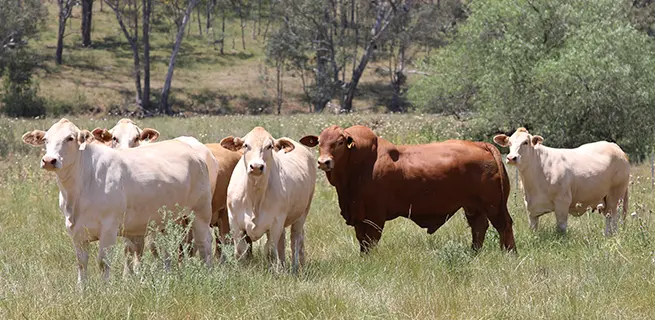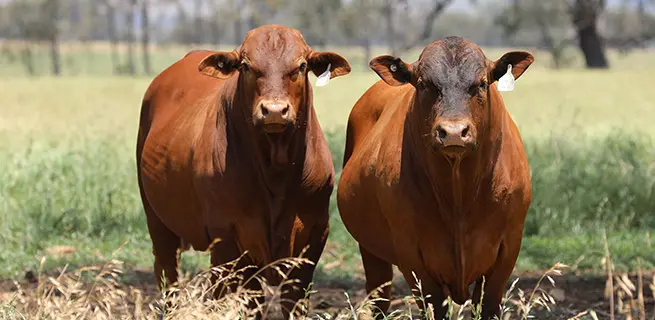Hewitt knows how breeding more efficient cattle will help increase productivity and improve quality. Now it’s time to understand what else we can do to reduce enteric methane emissions over the lifetime of the animal.
Warren Miller, the manager of Hewitt’s breeding program and a 30-year veteran of the elite stud cattle industry, said it boils down to a simple equation: the less feed consumed, the more productive the herd, and the less methane emissions produced. Therefore, breeding cattle that reach their target weight in a shorter period, thanks to their genetic make-up, increases productivity while helping to mitigate global warming.
“The main things we’re looking for with the Angus, Ultra Black and Composite cattle are getting a heavier animal earlier, better fertility, and better meat-eating qualities out of our extensive cow herds,” Warren Miller said.
As well as identifying strong genetics and breeding the desired traits in Hewitt’s own stock, Miller also traverses the country, looking for the best bulls to introduce into his breeding plan.
“Often, a bull’s owners will sell some semen and that gives us access to top-line new genetics, ensuring diversity,” Mr Miller said.
“I can get about 200 straws of semen from one bull, which means inseminating another 200 heifers, accelerating the program so I get more performance out of them or more ability to fatten them at the right times.”
Hewitt is now providing that same prospect to other breeders through this catalogue of beef sires. Additionally, we have identified positive traits in breeds such Charolais, Droughtmaster, Simmental and Senepols (see following pages) for composite herds that perform well in selected environments.


